Archive
The Greatest Risk for Gold Investors
By Jeff Clark | BIG GOLD
While we’re convinced that our gold and silver investments will pay off, they don’t come without risk. What do you suppose is the biggest risk we face? Another 2008-style selloff? Gold stocks never breaking out of their funk? Maybe a depression that slams our standard of living?
Though those things are possible, we at Casey Research don’t see that as your greatest threat:
“Your biggest risk is not that gold or silver may fall in price. Nor is it that gold stocks could take longer to catch fire than we think. Not even the prospect of the Greater Depression. No, your biggest risk is political. As bankrupt governments get increasingly desperate for revenue, any monetary asset held domestically could be a target. It is absolutely essential that every investor diversify themselves politically. In fact, at this point, it is the one action that should be taken before anything else.” - Doug Casey, September 2011
I know many reading this are prudent investors. You own gold and silver as solid protection against currency debasement, inflation, and faltering economies. You set aside cash for emergencies. You have strong exposure to gold stocks, both producers and juniors, positioned ahead of what is likely the next-favored asset class. You feel protected and poised to profit.
Yet, despite all this preparation, you remain exposed to one of the biggest risks.
Similar to holding a diversified portfolio at a bank without checking the institution‘s solvency, many investors keep their entire stash of precious metals inside one political system without considering the potential trap they‘ve set for themselves. While storing some of your gold outside your home country is not a panacea, it does offer one important thing: another layer of protection.
Consider the exposure of the typical US investor:
- systemic risk, because both the bank and broker are US domiciled
- currency risk, as virtually every transaction is made in US dollars
- political risk, because they are left totally exposed to the whims of a single government
- economic risk, by being vulnerable to the breakdown of a single economy
Viewed in this context, the average US investor has minimal diversification.
The remedy is to internationalize the storage of some of your precious metals. This act reduces four primary risks:
Confiscation: We don‘t know the likelihood of another gold confiscation. But we do know that things are working against us - particularly for US citizens. With $14.7 trillion of debt and $115 trillion of unfunded liabilities, the US government will likely pursue heavy-handed solutions. Under the 1933 FDR “gold confiscation” in the US (the executive order was actually a forced delivery of citizens‘gold in exchange for cash), foreign-held gold was exempted.
Capital Controls: Many Casey editors think some form of capital controls lie ahead, limiting or eliminating a citizen‘s ability to carry or send money abroad. If enacted, all your capital would be trapped inside the US and at the mercy of whatever taxing and regulating schemes the government might concoct. Although you might be able to leave the country, your assets could not travel with you.
Administrative Action: There are plenty of horror stories of asset seizure by a government agency without any notice or due process, possibly leaving the victim without the means to mount a legal defense. Having some gold or silver stored elsewhere provides what could be your only available source of funds in such a scenario.
Lack of Personal Control: Having gold and silver stored elsewhere adds to your options. You will have a source of funds available for business, entrepreneurial pursuits, investment, or pleasure.
Foreign-held assets also require greater awareness and planning:Notice above we said these risks can be reduced, not eliminated. There is no perfect solution; US persons could, for example, be compelled to pay a “wealth tax” on assets held worldwide, or even repatriate them in a worst-case scenario. Absent a crystal ball, the political diversity of asset location is an essential strategy against an uncertain future.
- Access to your metal or sale proceeds may not be quick. Therefore, this option is for those with some gold and silver stored at or near home. We do not recommend storing all your precious metals overseas; that defeats one of its purposes, to have it handy for an emergency.
- While we think the US poses the greatest threat, a foreign government could move to control certain assets as well. The risk varies by country and is generally greater within the banking system than with private vaulting facilities.
- Understanding and complying with reporting requirements is essential.
The bottom line, though, is that foreign-held precious metals can mitigate risk and give you more options. And as your metal holdings grows, diversification becomes more crucial.
Given our current rapacious climate, it‘s likely that simply buying gold won‘t be enough. We strongly suggest every investor diversify one‘s bullion storage outside their current political regime. The option may not be available someday, leaving you vulnerable without a secondary source of bullion.
We advise taking advantage of the opportunity before it is gone.
[One way to internationalize your bullion is to use a safe deposit box in a second country; however, this requires traveling to the institution to handle the paperwork and organizing the transport of your bullion... and the contents of a safe deposit box aren't insured. Other programs will store gold; but the metal is often held in the form of fractional ownership in a 400-oz. bar and not specific coins and bars held in your name. A better solution is to store your bullion in a non-bank depository, outside your home country, without shared ownership, and do it for a reasonable fee. We found a program that provides all those things; and it offers BIG GOLD readers six months' free gold and silver storage in a Canadian vault. A risk-free, three-month trial subscription to BIG GOLD will qualify you for that deal... plus all the expert analysis and actionable investment advice packed into each issue.]
Related Articles:
Proper Use of Gold in a Portfolio
By Alex Stanczyk | AFE Global Insider
Once an investor comes to the conclusion that gold is currently behaving as money and not as a commodity in this global economic environment, it is then clear how gold might fit into a portfolio. Instead of comparing gold to bonds, commodities, or equities, gold should probably be compared directly against other currencies. In this regard, one could point to the fact that it costs money to store, protect, and insure gold, but I would suggest that the typical 1% per annum cost of doing this is far below the opportunity cost of holding bonds in a negative interest rate environment. If the CCI index is averaging 14% gains per year, what that is really telling us is that the market considers the loss of buying power in the USD to be approaching this number versus the government-reported statistics.
-
All portfolios hold a cash component; why not hold some of this in gold? It is as liquid as any other currency with a 24- hour global market. When you compare gold’s performance versus nine of the top currencies globally over the last decade and then average it, you will see that gold has performed on average 17.1% better than all currencies in real purchasing power for the last ten years running.
There may be a time when it is deemed wise to lower exposure to equities and bonds and sit tight in cash. At this point we must ask the question, which form of money is going to hold value the best? Another question that a prudent money manager might consider is, “Do you have a strategic plan in place to deal with currency devaluation and systemic risk?” If not, perhaps it’s time you should.
-
Alex Stanczyk is an Executive Vice President of Anglo Far-East Bullion Company and a Market Strategist for the Luxembourg regulated Precious Metals Fund - LFP Prime SICAV SIF
-
-
For those who don’t agree with Alex, you have company! Listen to what this reporter has to say about why some investors are not buying gold.
Apparently, some investors don’t buy gold because it is backed by nothing! At least the USD is backed by the American government, and the Federal Reserve will still be around a year from now .. And that makes it a more comfortable investment for them! ![]()
Trump’s New Gold Standard
By Robbie Whelan | The Wall Street Journal
-
On Thursday, the newest tenant in Donald Trump’s 40 Wall Street, a 70-story skyscraper in Manhattan’s Financial District, will hand Mr. Trump a security deposit worth about $176,000. No money will change hands—just three 32-ounce bars of gold, each about the size of a television remote control.
The occasion will mark the first time the Trump Organization has accepted 99.9% pure gold bullion, rather than cash, as a deposit on a commercial lease. The tenant, precious-metals dealer Apmex, will sign a 10-year lease for 40 Wall’s 50th floor at a leasing rate of about $50 a square foot, according to Apmex Chief Executive Michael R. Haynes. The company is promoting the use of gold as a replacement for cash in some situations.
“Gold has been a valuable asset class for the last 10,000 years, but the world has drifted away from it,” Mr. Haynes says. “I figured, Trump is a smart guy, and he’ll realize that taking gold is a better idea than taking cash.”
Mr. Trump said he sees the deal as a repudiation of the Obama administration’s economic policies, of which he has been a vocal critic.
“It’s a sad day when a large property owner starts accepting gold instead of the dollar,” Mr. Trump said in an interview. “The economy is bad, and Obama’s not protecting the dollar at all. … If I do this, other people are going to start doing it, and maybe we’ll see some changes.”
Mr. Trump said he has some gold in his personal portfolio, but declined to say how much.
Thursday’s transaction was something Apmex suggested, Mr. Trump said.
-




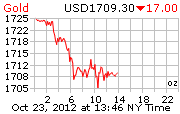
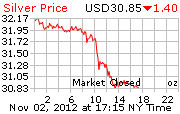
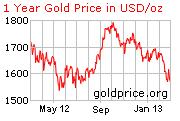
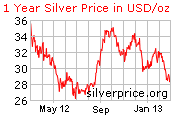
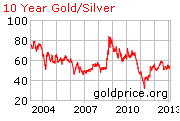
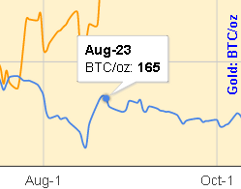
If history is any guide
-
Our generation grew up with the USD as the global reserve currency, and until recently, few would have questioned its status. Since the global financial crisis of 2008, and more so in the last few months, increasingly large segments of the global community have been questioning the status quo to the extend of actually preparing themselves for the inevitable day when the USD loses its reserve currency status.
Source: The Gold Standard Institute
While the average lifespan of global reserve currencies is around 100 years, the average lifespan of fiat currencies is only 27 years. Most if not all of the above global reserves currencies had some form of gold or silver backing in one form or another, that is they were not fiat currencies. The USD has been serving as a global reserve currency for over 90 years, 40 of which as a fiat global reserve currency.
If history is any guide, the USD is fast approaching its “use by date”. It is little wonder that many are preparing not just for the inevitable loss of its reserve status but also the demise of the currency itself.
Share this:
Like this: